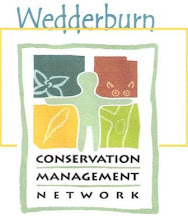 On 22 August 2012 the WCMN hosted a guest speaker evening at
the Empire State Hotel in Inglewood. Dr
Linda Broadhurst, a research scientist from CSIRO in
On 22 August 2012 the WCMN hosted a guest speaker evening at
the Empire State Hotel in Inglewood. Dr
Linda Broadhurst, a research scientist from CSIRO in
The event was a great success, with 25 people
attending. Participants spoke highly of
the presentation, with several commenting that the content was “complex but
clear”. As well as discussing how
genetic diversity comes about, Linda provided several case studies of Victorian
species, and provided useful and practical advice to participants about local
issues. Some of the key messages of the
evening were:
-
It is hard to do irreparable damage when carrying out
revegetation works.
-
Large trees are important reservoirs of genetic
diversity in the landscape.
-
When collecting seed, harvest over several successive
years, and from all sides of the canopy.
Blend seed from successive years together to improve genetic diversity
in revegetation jobs.
-
Strong evolutionary
forces such as saline soils, or particularly wet or dry climates cause local
adaptation – if these strong selective pressures are not present in your area,
bringing in new species to boost the gene pool can be a good thing in
revegetation.
-
Create a buffer zone around revegetation sites if
pollution of the gene pool is a concern – ask yourself “is it better to get these plants back in the landscape?” Assess the risk, and be aware that cross-pollination
may occur.
-
When working in very
high conservation significance sites, be more cautious about mixing provenance
than you would be when working with a degrading remnant of lesser conservation
significance.
There was strong feedback from participants that they would
like a follow up workshop on seed collection and treatment. This will be arranged for sometime over the
coming months.
Article and photograph - Karly Learmonth

No comments:
Post a Comment